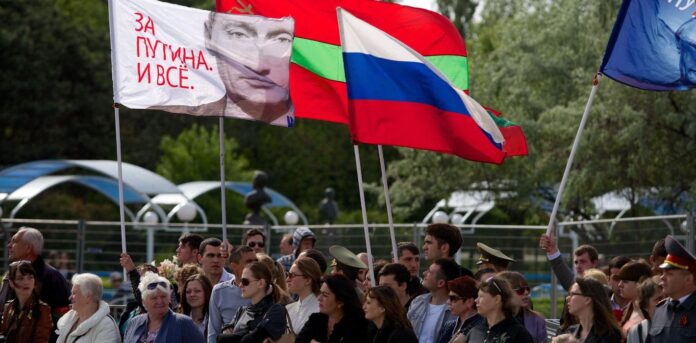In Tiraspol, the somber capital of Transnistria, the separatist region of Moldova, the “Back in USSR” restaurant presents an ambiance frozen in time, with Soviet slogans adorning the walls and a bust of Lenin at the entrance, according to Financial Times.
However, appearances can be deceiving. Time may be running out for this Russian-backed rebel region as the war in neighboring Ukraine presents an opportunity for Moldova to finally resolve the 30-year-old frozen conflict, often seen as a grim prototype for the Russian-occupied parts of Ukraine.
Valeriu Pașa, the chairman of the Moldovan think-tank WatchDog.md, stated, “There is a general sense that this conflict should not survive the war in Ukraine.”
Recognized only by other secessionist Russian entities, this breakaway region along Moldova’s border with Ukraine has relied on Russian nationalist imagery over the past three decades to reinforce its association as a Moscow satellite.
Around 1,500 nominally Russian soldiers are stationed in the enclave, remnants of a peacekeeping force deployed after the secessionist war in 1992 that claimed 700 lives. However, most of these soldiers are local recruits, and there is no rotation from Russia.
In Tiraspol’s central park, a gleaming bronze statue of Catherine the Great, completed three years ago, gazes at a statue of Alexander Suvorov, her general who founded Tiraspol in the late 18th century.
While these figures symbolize the connection to Russia, the shelves of supermarkets in Tiraspol, filled with Western goods, tell a different story. The traffic flowing across checkpoints that separate this strip of land from the rest of Moldova further underscores this contrast.
Resolving the conflict will depend on an agreement between Moldovan authorities in the capital, Chișinău, and the owners of Sheriff, the conglomerate that controls the Transnistrian economy, according to analysts. Sheriff owns a chain of supermarkets, fuel stations, and Sheriff Tiraspol, a professional football club housed in a state-of-the-art stadium on the town’s outskirts.
The economy of this land strip along the Dniester River, between Ukraine and Moldova, heavily relies on free gas supplied by Gazprom, the Russian state energy company. This enables Transnistrian authorities to maintain low utility bills, provide higher pensions than the rest of Moldova, and fuel the power station that supplies electricity to the entire country.
FOR THE MOST IMPORTANT NEWS, SUBSCRIBE TO OUR TELEGRAM CHANNEL!
“They have the perfect business model,” explained Alexandru Flenchea, former Moldovan deputy prime minister for reintegration and current director of the Initiative 4 Peace think-tank. “They have free gas, and they sell it for Moldovan hard currency. All they want is to perpetuate the status quo.”
However, that guarantee can no longer be ensured. Moldova, after years of inaction, is now expediting plans to reduce its dependence on Transnistria for electricity. Once this transition occurs, potentially in a few years, the separatists’ economy will face significant challenges. “If they don’t sell electricity, they go bankrupt,” Pașa warned.
A pivotal change occurred last year when Ukraine closed its border with Transnistria. This not only halted trade but also curtailed smuggling, a lucrative source of revenue for many years. It further amplified the region’s dependence on exports to the EU.
“The smuggling was a very important source of revenue for the elite in Tiraspol and their backers in Moldova and Ukraine,” noted Pașa. “It worked for many years, but now the Transnistrian region is highly reliant on the EU, with approximately 70% of its exports heading there. That’s positive. It’s



